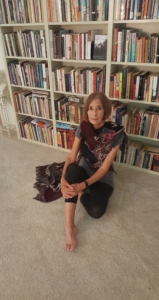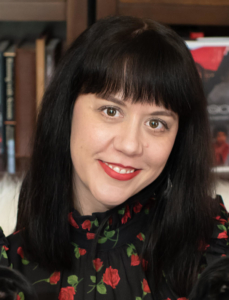Writing as Triathlon
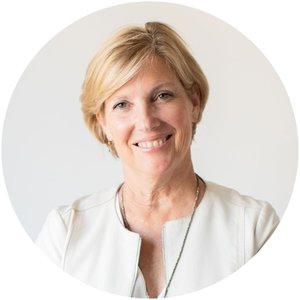 When I first began writing, I believed the most difficult part would be finishing a full-length manuscript, so I only thought it was important to take classes relating to story craft. It was a rude awakening to realize there was so much more I needed to know if anyone was ever going to be able to buy my book and read it.
When I first began writing, I believed the most difficult part would be finishing a full-length manuscript, so I only thought it was important to take classes relating to story craft. It was a rude awakening to realize there was so much more I needed to know if anyone was ever going to be able to buy my book and read it.
In a 2002 NY Times article, Think You Have a Book in You? Think Again, author Joseph Epstein cited a study that revealed “81% of Americans feel they have a book in them.” He goes on to use the rest of his essay to dissuade people from writing and suggests instead, “Keep it inside you where it belongs.”
Apparently, a lot of people do as Epstein suggests and “save the typing, save the trees.” On Reedsy.com, a blog states .01% ever make it to their goal of finishing that book. No doubt that is because a crafting great story is only about 30% of the book problem. Once authors type “The End,” it’s only the beginning of a long process to write query letters, secure an agent, sign a book contract and market the book. Add on to that the frustrating demand from publishers that writers must also build a “platform” on social media to sell their work, and really, it does seem like Epstein might have been right.
At the same time, it has never been easier for authors to bypass the agents who are gatekeepers of the Big Five publishing world and create their own books. The idea of “self-publishing” is not new, dating back to 1439 when the first printing press was invented by a German goldsmith named Johannes Gutenberg. Fast forward to 1979, when computers made desktop publishing accessible and the current print-on-demand technology possible.
In the last forty years, Amazon (KDP Direct) and Ingram (IngramSpark) have dominated and consolidated the POD world, creating a level of sophistication that can make a self-published book indistinguishable from traditionally published titles. But to navigate this part of the publishing universe, aspiring writers must learn how to turn their manuscripts into properly formatted files—a process which can seem daunting.
In truth, it simply takes more of the same persistence required to finish your 65,000-word manuscript. You can learn how to master plot lines and dialogue, as well as how to publish your own great book. Take, for example, the determination of Lisa Genova.
In 2007, she was simply a grad student who had received multiple rejections from traditional publishers. But Genova believed in her manuscript based on the story of her grandmother’s early onset Alzheimer’s, so the aspiring author self-published. After gaining popularity with readers, Simon & Shuster picked up the title and republished it two years later under the title Still Alice. Genova’s book, which had been initially rejected, was on The New York Times Best Seller List for more than 40 weeks, sold in 30 countries, translated into 20 languages, and became an Oscar-winning film. None of that would have happened if Genova had not taken the initiative to publish her own book.
In reality, writing a book is like completing a triathlon—and each of the three stages takes training: writing, publishing and marketing. Don’t wait until your last page to think about how to get your book in the world. Start now, learning to navigate the publishing and book-marketing world.
Maybe even more important than crafting your great characters is learning how your readers will ultimately discover them.
Learn About Self-publishing with Kathy
TUESDAY, OCTOBER 17, 2023: “Paths to Self-Publishing,” 6:00-8:00 p.m., in-person at Charlotte Lit
So, you’ve finished a manuscript and have made the decision to self-publish. Where do you start? Or, maybe you worry that self-publishing means “settling” for an unprofessional product. No matter on which side of that fence you sit, the volume of information and opinions is overwhelming. It can be difficult to know which services to trust and whether self-publishing is right for you. Kathy Izard has published four books three ways, including self-published and “Big Five.” Kathy will walk you through 10 steps to putting your words in the world. From purchasing your own ISBN number to ordering author copies, Kathy can answer all your questions about becoming a published author of adult or children’s books. Info
About Kathy
Kathy Izard is an award-winning author and speaker who writes inspirational nonfiction, including The Hundred Story Home, The Last Ordinary Hour and her upcoming release Trust the Whisper (Summer 2024). Kathy also publishes children’s books including A Good Night for Mr. Coleman and Grace Heard a Whisper (Fall 2023). Kathy has written essays for Katie Couric Media and her work as been featured on the Today Show, inspiring people to be changemakers in their community. Online: kathyizard.com.
Finishing a Manuscript is Only the Beginning
 When I first began writing, I believed the most difficult part would be finishing a full-length manuscript, so I only thought it was important to take classes relating to story craft. It was a rude awakening to realize there was so much more I needed to know if anyone was ever going to be able to buy my book and read it.
When I first began writing, I believed the most difficult part would be finishing a full-length manuscript, so I only thought it was important to take classes relating to story craft. It was a rude awakening to realize there was so much more I needed to know if anyone was ever going to be able to buy my book and read it.
In a 2002 NY Times article, Think You Have a Book in You? Think Again, author Joseph Epstein cited a study that revealed “81% of Americans feel they have a book in them.” He goes on to use the rest of his essay to dissuade people from writing and suggests instead, “Keep it inside you where it belongs.”
Apparently, a lot of people do as Epstein suggests and “save the typing, save the trees.” On Reedsy.com, a blog states .01% ever make it to their goal of finishing that book. No doubt that is because a crafting great story is only about 30% of the book problem. Once authors type “The End,” it’s only the beginning of a long process to write query letters, secure an agent, sign a book contract and market the book. Add on to that the frustrating demand from publishers that writers must also build a “platform” on social media to sell their work, and really, it does seem like Epstein might have been right.
At the same time, it has never been easier for authors to bypass the agents who are gatekeepers of the Big Five publishing world and create their own books. The idea of “self-publishing” is not new, dating back to 1439 when the first printing press was invented by a German goldsmith named Johannes Gutenberg. Fast forward to 1979, when computers made desktop publishing accessible and the current print-on-demand technology possible.
In the last forty years, Amazon (KDP Direct) and Ingram (IngramSpark) have dominated and consolidated the POD world, creating a level of sophistication that can make a self-published book indistinguishable from traditionally published titles. But to navigate this part of the publishing universe, aspiring writers must learn how to turn their manuscripts into properly formatted files—a process which can seem daunting.
In truth, it simply takes more of the same persistence required to finish your 65,000-word manuscript. You can learn how to master plot lines and dialogue, as well as how to publish your own great book. Take, for example, the determination of Lisa Genova.
In 2007, she was simply a grad student who had received multiple rejections from traditional publishers. But Genova believed in her manuscript based on the story of her grandmother’s early onset Alzheimer’s, so the aspiring author self-published. After gaining popularity with readers, Simon & Shuster picked up the title and republished it two years later under the title Still Alice. Genova’s book, which had been initially rejected, was on The New York Times Best Seller List for more than 40 weeks, sold in 30 countries, translated into 20 languages, and became an Oscar-winning film. None of that would have happened if Genova had not taken the initiative to publish her own book.
In reality, writing a book is like completing a triathlon—and each of the three stages takes training: writing, publishing and marketing. Don’t wait until your last page to think about how to get your book in the world. Start now, learning to navigate the publishing and book-marketing world.
Maybe even more important than crafting your great characters is learning how your readers will ultimately discover them.
ABOUT KATHY: Kathy Izard is an award-winning author and speaker who helped bring transformation to Charlotte in homelessness, housing and mental health. Kathy self-published her first book, The Hundred Story Home, which received a Christopher Award for inspiring nonfiction and was acquired by Harper-Collins. Since 2016, Kathy has created her own imprint to publish three books for adults and children in print, e-book and audiobook. Kathy’s work has been featured on the Today Show and NPR inspiring people to be changemakers in their communities. Learn more www.kathyizard.com
Horizons
Once I wrote “The distance to the horizon is a fierce happiness,” and I believe it’s true. I had a good friend once who was a fine painter, and a series of paintings he did right before he retired from the art department inspired me so much that I wrote tiny stories about the characters in them. My friend made a fold-out book and exhibited it with the paintings. Later, when I wrote monologues in the voices of just the women, he jumped in and started making extra drawings. Now, he’d been fighting oral cancer for years and about this time he was approaching the end stages. I used to sit with him in his house—I remember he wore a mask because most of his face was gone, he said, he looked like a monster—and we’d talk about how things were going. Then one day he burst into tears and said “Lola, I’m so sorry. I’m not going to be able to finish our project”. To which I told him the truth: “Dear X, don’t worry. Everything we’ve been doing for all these months IS our project; it was never about finishing in the first place.” In other words, our project was the horizon.
Thinking of tears reminds me of a story about me and another artist. The artist in this one is the 18th century Japanese painter and print maker, Hokusai (1760-1849), whose pictures I’ve loved for my whole adult life but never appreciated properly until I saw an extensive exhibit of his work. I’d thought I preferred his depictions of country people to the views of Mt. Fuji he did late in his life—and I still do like those—but when I found myself in the same room as Mt Fuji, I started crying, that mountain moved me so much—the way he rendered it, it was everything.
After that, I started reading about Hokusai’s life, and what I found has made him a role model for the rest of mine.
…. The period, beginning in 1834, saw Hokusai working under the name “Gakyō Rōjin Manji” (The Old Man Mad About Art). It was at this time that Hokusai produced One Hundred Views of Mount Fuji…
In the postscript to this work, Hokusai writes: “From around the age of six, I had the habit of sketching from life. I became an artist, and from fifty on began producing works that won some reputation, but nothing I did before the age of seventy was worthy of attention. At seventy-three, I began to grasp the structures of birds and beasts, insects, and fish, and of the way plants grow. If I go on trying, I will surely understand them still better by the time I am eighty-six, so that by ninety I will have penetrated to their essential nature. At one hundred, I may well have a positively divine understanding of them, while at one hundred and thirty, forty, or more I will have reached the stage where every dot and every stroke I paint will be alive. May Heaven, that grants long life, give me the chance to prove that this is no lie.”
In 1839, a fire destroyed Hokusai’s studio, but he never stopped painting and completed Ducks in a Stream at the age of 87. He is said to have exclaimed on his deathbed, “If only Heaven will give me just another ten years… Just another five more years, then I could become a real painter.”
ABOUT LOLA: Lola Haskins’ poetry has appeared in The Atlantic, The London Review of Books, London Magazine, The New York Quarterly, Georgia Review, Prairie Schooner, Rattle and elsewhere, as well as having been broadcast on NPR and BBC radio. She has published fourteen collections of poems, a poetry advice book and a non-fiction book about fifteen Florida cemeteries. Ms. Haskins has been awarded three book prizes, two NEA fellowships, four Florida Cultural Affairs fellowships, the Emily Dickinson/Writer Magazine award from Poetry Society of America, and several prizes for narrative poetry. She retired from teaching Computer Science at the University of Florida in 2005 and served from then until 2015 on the faculty of Rainier Writers Workshop.
SEE LOLA LIVE AT CHARLOTTE LIT! Lola Haskins will read from and discuss her work at Charlotte Lit on Friday, November 5 at 6 p.m. Free! Advance registration required.
Rewriting Southern Traditions
LAKE HARTWELL, SOUTH CAROLINA
By Beth Gilstrap
It’s past lunch hour and Grandmother is still wearing her
housecoat. Tings and sprays bounce from the stovetop. A
glimmer of steam gathers on her upper lip, not sweat, mind
you—not sweat. The peonies on the fabric are wide and
heavy pink, like they’d fall over if they were out in the
side garden as they always are during late April. But we are
in July and July is sweet and frayed, the grass only green
down on the banks of the lake. Me and Juna played chicken
on rafts all morning. Our suits still damp when we put
them on, hers only halfway up as we ran out the door, letting
it slam too hard, hearing Grandmother say, “Watch my
nerves. For Lord’s sake. My nerves.” By the time we come in,
we were striped, our torsos a wormy kind of white, our fingertips
wrinkled, begging for fried squash and okra Grandmother
had in heaps by this point, for smushed-up peaches
meant for the ice cream churn, for teeth-cracking chunks of
rock salt, the wayward bit of a watermelon seed, you know,
that stringy bit you can’t get down no matter how hard you
try so you wind up spitting the seeds on Grandmother’s
floor even though you wasn’t supposed to be eating them in
the house cause y’all know better, cause she done told you
twice to get your butts outside. And once you’re outside,
the menfolk stand in a circle around their cache, taking
stock of M-80s and bottle rockets and whirling spiders and
whistling dixies, which was basically the same, but hateful,
so hateful you could feel it blow your cousin’s pinky off
even though some grown-up yelled “fire in the hole” and
dumbass stood there in a sulphur fog like it was all happening
to someone else and next year when you and Juna went
in at lunch you were practically teenagers and ate rolled-up
honey ham cigars and Chicken in a Biskit Crackers—those
buttery rectangles with a chemical chicken flavor—instead
of spitting seeds on the floor cause now y’all were good girls,
making sure to let Grandmother lie down awhile and have
herself a little peace in the back room with the big box fan
and a single bed and her thin, yellow sheets.
ABOUT BETH: Beth Gilstrap is the author of the Deadheading & Other Stories, Winner of the 2019 Red Hen Press Women’s Prose Prize due out October 5, 2021 and available for preorder now. She is also the author of I Am Barbarella: Stories (2015) from Twelve Winters Press and No Man’s Wild Laura (2016) from Hyacinth Girl Press. Her stories, essays, and hybrids have appeared in Denver Quarterly, Wigleaf, The Minnesota Review, New Flash Fiction Review, and the Best Microfiction Anthology, among others. Born and raised in the Charlotte area, she recently relocated to Louisville where she lives and writes in an ornery old shotgun house.
LEAN INTO LYRICAL TRADITIONS WITH BETH: Join Beth for a reading and book discussion of Deadheading and Other Stories on October 20, at 6 PM for our next Wednesdays@Lit. And join Beth for Uneasy Women: Writing Feminist Southern Gothic Fiction on October 21st. In this workshop, you’ll examine writing traditions, how they’ve changed, and how we might craft them for 21st Century readers by examining excerpts from contemporary female authors including: Toni Morrison, Jesmyn Ward, and Dorothy Allison. We will examine how they subvert traditional gender roles, how they give agency to characters (often deemed outsiders) who have traditionally been victims of the American capitalist patriarchy. More information is here.
Five Steps Every Author Needs to Take Before Finishing a Manuscript
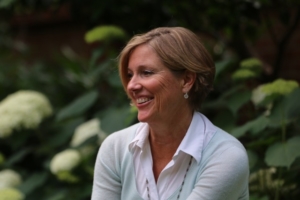 In 2016, after six years of writing, I finally finished my first manuscript. I truly believed that writing a book was the most difficult part of becoming an author. No one told me selling a book is tougher than writing one.
In 2016, after six years of writing, I finally finished my first manuscript. I truly believed that writing a book was the most difficult part of becoming an author. No one told me selling a book is tougher than writing one.
It is almost as if I believed, “If I write it, they will come.” Jane Austen didn’t use Instagram or Facebook or an author’s website. Harper Lee didn’t do podcasts much less interviews. Couldn’t I just be an introverted literary hermit and sell books? Unfortunately, not in today’s world.
Author Joanne Kraft said, “Not all marketing people are writers, but all writers must learn to be marketers.”
The average self-published manuscript only sells around 250 copies over the lifetime of the book. Even a traditionally published book only sells an average of 3,000 copies because publishers rely on the authors to do their own marketing. If you have written a book proposal, you know that the majority of that document describes how you, the author, will market your book.
That starts with understanding how to help readers find you and showing up in the world as the author you want to become. Before you even write that last perfect sentence, every writer needs to:
- Invest in an Author Headshot—study the back cover of books you like to read and create a similar professional photo that makes you look approachable to your potential readers.
- Write your Author Bio—create a summary of your professional qualifications or writing experience that let readers know why they can trust you as an author. Read author bios on your favorite genre and create in a similar style.
- Buy your author domain name—get your name registered so you can create a simple website where readers can learn more about you.
- Create an Author Landing page—sites such as Squarespace or Wix make it easy for you to use your domain name and have at least one page with your bio, headshot, and information about your writing or potential titles
- Create one author social media channel (Instagram, Twitter, Facebook) where you will begin engaging your potential readers. This should be separate from your personal accounts or turn your personal account into your author account to begin posting about subjects related to your genre.
With a professional-looking author presence, you will be ready for readers (and agents and publishers) to discover you even before your story is finished.
ABOUT KATHY: Kathy Izard is an award-winning author, speaker and changemaker. In the past five years, she has published four books three ways in two languages selling over 30,000 copies. Kathy believes we all have a story worth telling and loves helping writers find the courage to put their words in the world. Her new memoir The Last Ordinary Hour is available in paperback, Kindle and Audiobook. Learn more about Kathy: www.kathyizard.com
MASTER MARKETING WITH KATHY: Join Kathy for Marketing Your Book on December 6th, at 6pm (ET) online. Don’t wait until after your book is published to find your readers. Whether you are planning to self-publish or you already have a book contract, today’s authors need to know how to market their own books. More information here.
Honoring the Craft
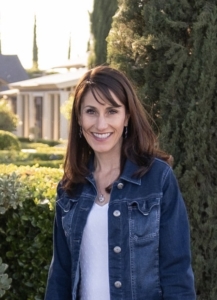 You might have heard the platitude “those who can’t do, teach.” Obviously, I don’t agree with that theory. I’m a teacher. Plus, I have several friends and acquaintances who defy that logic. And yet, I also recognize that teaching makes doing a lot more challenging.
You might have heard the platitude “those who can’t do, teach.” Obviously, I don’t agree with that theory. I’m a teacher. Plus, I have several friends and acquaintances who defy that logic. And yet, I also recognize that teaching makes doing a lot more challenging.
A former student, who is also a writer and professor, likens teaching to a “joyful bloodletting” whereby you insert an IV into your vein and suck all of the creativity out of your bloodstream.
While it isn’t quite that intense for me, I’m also not teaching full time (though it feels like full time!). What I have noticed since the coronavirus pandemic began, and I started feeling pulled to reach more students, is that I have to be more intentional about my craft. I have to make it a priority not only to read my students’ work, but also to tackle my own. What that requires, of course, is discipline — something I’ve been sorely lacking!
Here’s the thing: For weeks, I had been writing an essay my mind, and occasionally in my journal. A piece that required me to only sit in front of a computer and think thoughtfully for a chunk of time. The problem was, with three kids, a husband, four jobs, and two ongoing workshops, well, I didn’t have a chunk of time!
So, I decided to approach my essay writing like any other assignment (to a degree). The key prop: A timer! But I’m jumping ahead. Allow me to back up and walk you through my process step by step.
- Be spontaneous. Don’t wait for the right time, or the best time, or the time when you have uninterrupted time. Just sit down with a pad of paper, or pull up a blank document, and go for it. You’ll hear people tell you to block out time in your calendar or make an appointment with yourself. If that works for you, GO FOR IT! If not, be spontaneous about it. Me? I wrote at the picnic table while my kids rode their bikes around me. I recorded notes on my phone will driving to the grocery store. I worked within the confines of my reality.
- Use a timer. If I could offer only one suggestion to alleviate writer’s block, it would be: Get yourself a timer. Theo Pauline Nestor addresses this in her book, Writing is My Drink (highly recommend, by the way). I’ve heard the same advice delivered on several writer’s podcasts (The Beautiful Writer’s Podcast frequently addresses this idea, but I can’t recall the specific episodes). The Cliff’s Notes: Set a timer for 15 minutes, or even 5, and put pen to paper. If you really want to get into the weeds on this, read “Working it Out.”
- Make a plan. I don’t mean plot out how you’re going to find the time, energy, enthusiasm, fill-in-the-blank, to write the essay, but make a plan to get the thing done. And come up with a really cool reward when you knock it out of the park.
- Build in accountability. Sometimes just telling someone you plan to write a story about X, Y, Z builds in a certain level of accountability. It could be a friend, a partner, a fellow writer. It doesn’t matter who it is, but it helps if the person will say, “hey, how’s that story coming along?”
- Be prepared to go off course. Starting an essay comes with its own set of risks. If you’re anything like me, once you really dig in, you can’t let go. I become like a dog with a meaty bone. I sink my teeth in, and I can’t release. So, yes, I started that essay, but then I became obsessed. I thought about it day and night, trying to figure out the crux of the story, word smithing paragraphs while I was half asleep, and jotting down notes at every opportunity. Despite a full workload, two contract positions with daily deliverables, and several students who want and deserve timely feedback, all I really wanted to do was write the damn story — and make it sing. Turns out, I’m well on my way.
This blog was originally published on July 7, 2020, at amypaturel.com
ABOUT AMY: Amy Paturel has been crafting essays for more than two decades and teaching personal essay writing for more than 15 years. Her personal and reported essays frequently appear in The New York Times, The Washington Post, The Los Angeles Times, Discover, Good Housekeeping, Parents, and more. Two of her pieces were featured in Newsweek’s “My Turn” column, and she garnered two “honorable mention” awards in ASJA’s personal essay category (2009 and 2011).
CRAFT A BETTER ESSAY WITH AMY: Join Amy for a Charlotte Lit month long Studio Writing the Personal Essay beginning October 24th, online. This personal essay writing intensive will guide you through generating interesting essay ideas to a salable piece. More information here.

